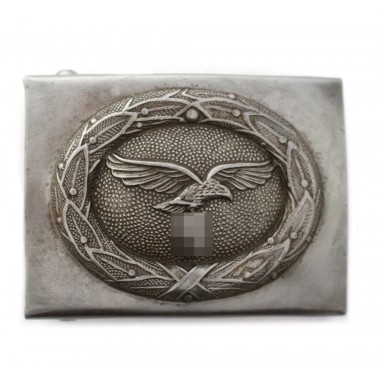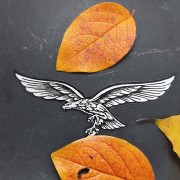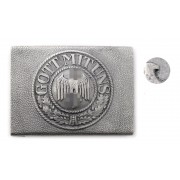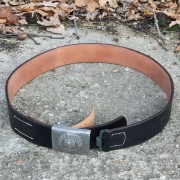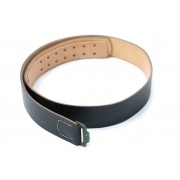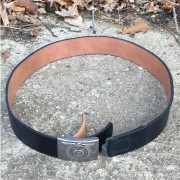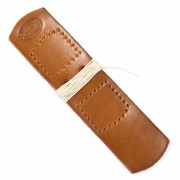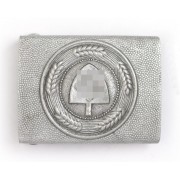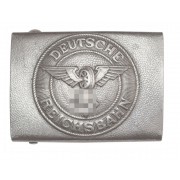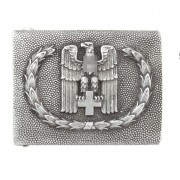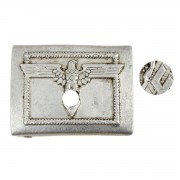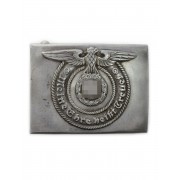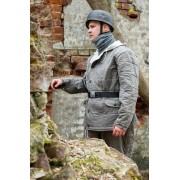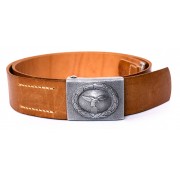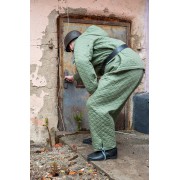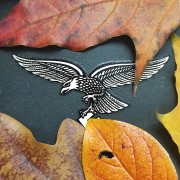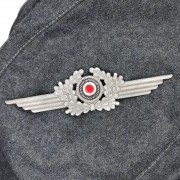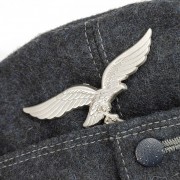Description
This product is intended for military-historical reenactment (immersive stydy of history); for creating costumes for theatrical and film, video plays condemning Nazism and fascism; as well as for exhibiting in museums of military history. This product is not propaganda of ideas and criminals convicted by an International Military Tribunal, and should not be used for such a purpose! The photos have been edited in accordance with the requirements of the law.
If you need additional photos of the product, write to us by email or in the messenger.
Attention! The manufacturer changes stamps on the buckles from batch to batch. If you need a buckle with particular stamps, mention it in the order, we will choose one for you (if it is in stock).
The buckle is made of steel. The buckle depicts the symbol of the German air force of the Third Reich (flying eagle with a swastika in its claws) in the oval wreath of bay-leaves. The same pattern is pressed in on the reverse side, as is customary for stamped metal products. The rotary bar is made of three parts as originals and is riveted onto the buckle. The bail is massive, stamped 3-mm thick wire, solded. The design of the buckle has an unsurpassed similarity with the original, all the details are finely worked out, it is the best copy of our time.
This buckle fits a 45mm wide belt, it can be technically used with Wehrmacht, Waffen-SS and Luftwaffe belts, which are for sale in our shop.
The buckle is sold unpainted and without leather pull-tab, as seen in the photo. You can buy the paint and pull-tab from us separately.
Historical reference.
Steel buckles were started to produce since 1940. All the equipment parts, which earlier were made from aluminum, began steel-stamped from that year on. Aluminum buckles were more common at the front until 1942.
As a rule, leather pull-tab was sewn to the buckle. The tab is usual for steel buckles somewhere until 1942, and then it was abolished. It bore the manufacturer's marking and, sometimes, the abbreviated name of the unit where the soldier served. However, name of the unit is not typical for steel buckles (after 1940). The pull-tab was to hold the equipment if the belt was took off, to prevent the equipment from sliding off the belt under its own weight. The buckle can be used without the pull-tab, the belt + buckle set is ready for wearing.










